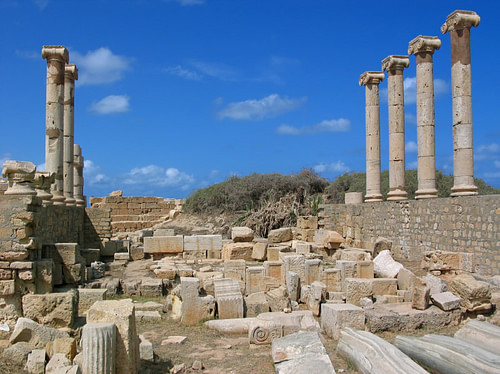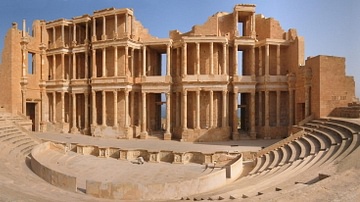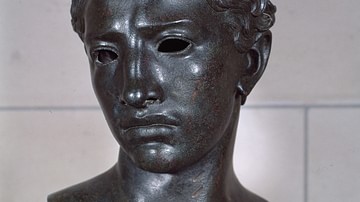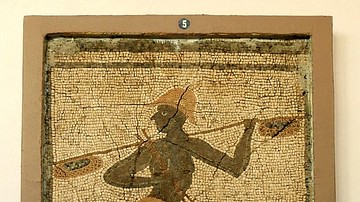Sub-Saharan Africa was explored by Roman expeditions between 19 BCE - 90 CE, most likely in an effort to locate the sources of valuable trade goods and establish routes to bring them to the seaports on the coast of North Africa, thereby minimizing disruption in trade caused by conflicts among indigenous tribes and kingdoms.

Most of these expeditions began as military campaigns, while the last one may have been initiated in the interests of trade relations, but the purpose of all of them seems to have been in the interests of expanding Roman presence in Africa and locating the source of the most valuable trade goods. Rome had established trade relationships with a number of kingdoms in Africa, most notably Meroe, whose merchants brought goods for trade from the interior to the three great Roman centers on the North African coast – Leptis Magna, Oea, and Sabratha – but the desire for even more goods, and direct access to them, prompted Roman excursions to the Sub-Saharan regions. The five expeditions were:
- Cornelius Balbus – 19 BCE
- Suetonius Paulinus – 41 CE
- Septimius Flaccus – 50 CE
- Valerius Festus – 70 CE
- Julius Maternus – 90 CE
These expeditions brought the Romans into direct contact with tribes they had never met before, resulting in cross-cultural exchange, the import of Roman goods to Africa, and the export of African goods to the larger Mediterranean civilizations. Although late-19th/early-20th-century CE European scholars made much of the “civilizing” influence of the Romans on the “natives” of Sub-Saharan Africa, modern scholarship makes clear the people with whom the Romans interacted already had highly developed civilizations and rich cultural heritage. The cultural impact of the Roman expeditions on the Sub-Saharan cultures, in fact, is still debated among scholars.
Berber, Carthaginian, & Roman Trade
Trade among the different kingdoms and tribes of Africa was already well established by the time the Phoenicians founded Carthage c. 814 BCE. The overland trade routes, connections, and seaports had been used by African merchants for centuries and, once the Carthaginians gained a foothold in North Africa, contributed to the wealth, prestige, and power of their central city and others in the region. Trade centers were already established on the North African coast by the semi-nomadic or nomadic Berber tribes of the region who traded with each other and may have exported goods elsewhere. These are thought to have been modest sites which the Carthaginians then took over and developed. How and with whom the Berbers may have traded outside of Africa is unclear, but it is certain that such trade was established since the Carthaginians simply took over the earlier Berber business contacts. Scholars R. Oliver and J. D. Fage comment:
Since the Phoenicians were quick to develop any opportunities of trade which came their way, and since their mercantile skill was backed by advanced agricultural techniques, even the smallest coastal settlement tended to become a local metropolis where Berber tribesmen could gain some knowledge of a more ordered and settled mode of living. (54)
The Carthaginians were interested in “civilizing” the Berbers by introducing them to urban life and culture and it seems they achieved their goal as Berber merchants became a staple of trade in the major Carthaginian cities of North Africa. After the fall of Carthage to Rome following the First Punic War (264-241 BCE), Rome became the Mediterranean superpower and replaced Carthage, taking their North African trade centers and transforming them into the region known as Regio Tripolitania (“region of the three cities”) referring to Leptis Magna, Oea (modern Tripoli), and Sabratha.
After 30 BCE, following the death of Cleopatra VII (l. 69-30 BCE), Rome took Egypt and added it to its North African holdings. Roman Egypt then became the empire's “breadbasket” whose grain supply to Rome was supplemented through trade at the cities of Regio Tripolitania. Scholar John Reader comments on the Roman's dependence on North African trade (the designation "corn" in this passage should be understood as "grain", not as North American maize):
At this time, Rome had a population of close to 1 million people…Such large urban communities require a large food supply and must have access to an extensive agricultural system, especially grain crops, which are highly productive, relatively easy to transport and store for future use…Rome and its immediate environs consumed 320,000 tons of corn each year – nearly 1,000 tons each day – more than 60 percent of which (200,000 tons) came by sea from Rome's North African colonies, and a further 100,000 tons from the cornfields of Egypt alone. Rome's huge and unremitting demand for grain was serviced by a minimum of 800 sailings across the Mediterranean each year, in ships with a capacity of up to 1,000 tons and more. (201-202)
Rome had established trade relations with the Kingdom of Kush following the Meroitic Wars (27-22 BCE), after which Augustus Caesar (r. 27 BCE - 14 CE) entered into an agreement with one of the greatest Candaces of Meroe (Queens of Kush), Amanirenas (r. c. 40-10 BCE) and Meroitic goods found their way up through overland routes to the seaports on the coast. From West Africa, other traders also brought their items toward Regio Tripolitania, but these trade routes were often disrupted by conflicts between kingdoms or different tribes.
It has been suggested that one of the tribes involved in this region's trade were the Garamantes, though this claim has been challenged. Whether the Garamantes were directly involved in trade coming from West Africa is actually irrelevant, however, because it is certain they did something - possibly interrupting trade through raids on caravans - which sparked a response from Rome leading to the first of the Roman expeditions.
Expeditions
Cornelius Balbus – 19 BCE
Lucius Cornelius Balbus (l. 1st century BCE) was Proconsul of Africa in c. 19 BCE when he was ordered by Augustus Caesar to put down the Garamantes who were, in some way, interfering with Roman interests in the Fezzan region of Libya. Balbus led 10,000 legionaries from Sabratha against the Berber tribe and conquered them. Afterwards, and perhaps on his own initiative or on orders, Balbus then sent a number of his men onwards to explore the “land of the lions” which lay on the other side of the Hoggar Mountains in the central Sahara region. Balbus' men returned with the report of a large body of water now thought to be the Niger River and Roman coins and other artifacts have been found in the region supporting the claim that Balbus' men crossed the mountains and explored the region.
This evidence has been challenged, however, by Professor Timothy Insoll, among others, on the grounds that Balbus was only proconsul for a year and would have had little time to conduct the campaign against the Garamantes and extend his stay in the region to explore further (Insoll, 211). Insoll further claims that there is no evidence for a Roman presence in the area said to have been explored at this time.
Pliny the Elder (l. 23-79 CE), however, who details the Balbus expedition in his Natural History, suggests that it was the report of Balbus' men that enabled the revision of the Roman map of Africa by Agrippa, making it more accurate (Natural History, VI.209). Roman artifacts have, in fact, been found in the region dating to about the time of Balbus' expedition but the passage in Pliny clearly refers to Balbus' campaign against the Garamantes, not any further explorations. Even so, it is likely that Pliny's account of Balbus' expedition is accurate, given the physical evidence and later expeditions which seem to have had some knowledge of this first one.
Suetonius Paulinus – 41 CE
Gaius Suetonius Paulinus (l. 1st century CE) was appointed governor of Mauretania in 41 CE, shortly after the Berber freeman Aedemon launched his revolt (c. 40-44 CE) which became a widespread rebellion of Berbers against Roman occupation. Paulinus, along with the general Gnaeus Hosidius Geta (l. c. 20 - c. 95 CE) would eventually put down the rebellion with great loss of life among the Berbers and destruction, or partial destruction, of a number of cities.
In the course of this campaign, in 41 CE, Paulinus led his men over the Atlas Mountains in southern Mauretania. He reached the summit of the mountains after a ten-day march and, according to Pliny (V.14) then traveled a significant distance down through the plains to explore along a river referenced as Ger and then the area around the Daras River (modern Senegal River). Evidence for Roman presence in this region comes from artifacts and coins discovered there, many in and around the city of Akjoujt.
Pliny claims that Paulinus found a large quantity of the plant known as euphorbia growing in the region, earlier identified by King Juba II of Numidia and Mauretania (r. 30-25 BCE) as a potent laxative, but few other details are given of the expedition. Paulinus would later become famous as the general who put down the revolt of Boudicca in Britain in 60/61 CE, a victory which then eclipsed whatever he may have reported on his African expedition.
Septimius Flaccus – 50 CE
In 50 CE, one Septimius Flaccus led an expedition from Leptis Magna against a “rebellious tribe” which was disrupting trade in the region controlled by the Garamantes (and so were most likely the Garamantes, but this is unclear). Who Flaccus was is equally unclear as he is not identified with any legion and no earlier mention is made of him. Some scholars have suggested that the geographer Ptolemy (l. 100-166 CE), who wrote the account of Flaccus' expedition based on an earlier source (Marinus of Tyre, writing 107-115 CE), got his name wrong or may have omitted information he felt was unnecessary. Flaccus must have had some military background, however, in order to command a force and lead them successfully against whatever group of people was causing the problem in the southern regions.
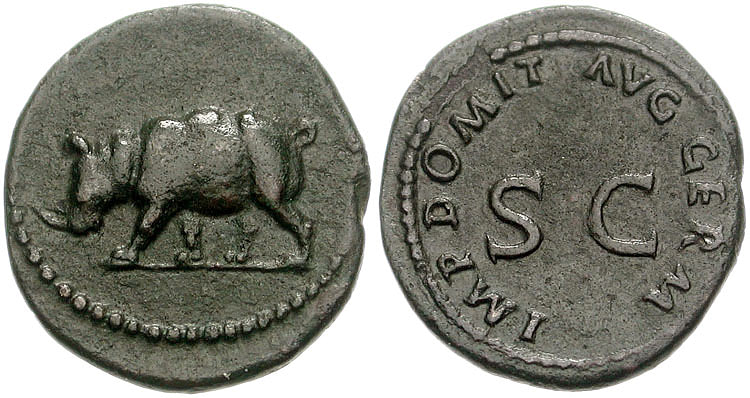
According to Ptolemy, these people had conducted a series of raids on Leptis Magna, disrupting trade and disturbing the peace, and Flaccus marched into Garamantes territory and subdued them. He then traveled on over the Tibesti Mountains and into the land known as Agisymba which was north of a great body of water known as “the lake of the hippopotamus and rhinoceros” which has been identified as Lake Chad. Flaccus' expedition is the first one known to have interacted with the populace of this region at any length, but no details are available on what this contact consisted of. Scholars agree that Agisymba was to the north of Lake Chad but, as that lake was much larger at that time, precisely where it was, how large the region, and who lived there is unknown. It is assumed it was controlled by the Garamantes.
Valerius Festus – 70 CE
Gaius Valerius Festus (dates unknown except for 70 CE) was the commanding general of Legio III Augustus and led them against the Garamantes in 70 CE. Festus (according to the historian Tacitus, l. 56-117 CE) marched against the Garamantes, defeated them, and then followed Balbus' earlier course to explore the region down to the Niger River. Festus declared for Vespasian as emperor in 69 CE, the Year of Four Emperors (when four emperors of Rome ruled in quick succession, ending with Vespasian, r. 69-79 CE), and already had command of the legion in Africa. There is no documentation of a command from Vespasian, but as one of the emperor's supporters, Festus would have been given leave to continue on after subduing the tribe or, perhaps, he simply moved on through his own initiative to resolve problems in trade.
Scholar Raffael Joorde notes that the Garamantes remained unconquered at the time Tacitus was writing his Histories (c. 109 CE) and so, whatever the nature of the conflict was, it seems to have concluded with either a peace treaty along the lines of what Balbus contracted after his campaign or else Festus' initiative was only against tribes in the region of the Garamantes or a criminal element whose suppression the Garamantian king would have approved of since it seems Festus had the support of the king in his further travels which finally brought him to the city of Timbuktu in the region of Mali. It was probably Festus, not Flaccus (as is often cited), who left a garrison of legionaries from Legio III Augustus in the region. 
Julius Maternus – 90 CE
However Festus concluded business with the Garamantes, they seem to have been on friendly terms with Rome twenty years later when one Julius Maternus led an expedition into their territories. As Joorde notes, the problem with sources regarding this expedition is that it is unclear who Maternus was and what position – diplomat, merchant, or military commander – he held. There is no mention of Maternus before or after his expedition and details of the excursion itself seem to support any of the three possibilities.
Maternus traveled in the company of the Garamantian king and so, as a diplomat, could have been forging better political relations; as a merchant, forging better trade relations; as a general, helping the king to put down rebellious subjects - which would have benefited them both. Whoever he was, and whatever position he held, Maternus' success seems to have been based on the reports of the expeditions which went before him. Like Flaccus, he crossed – or at least traveled along - the Tibesti Mountains and explored Agisymba and, like Festus and Balbus, explored the region around the Niger River.

Ptolemy suggests that Maternus' expedition was solely for profit and presents him as a merchant interested in goods from the interior which could be had without the “middlemen” of the Garamantes or other traders bringing goods to Regio Tripolitania. If this is the case, it is essentially little different from what seems to have been the goal of the earlier expeditions: to find sources of gold and other precious trade goods which could be had by the Romans without bothering with the indigenous merchants and their various conflicts.
Conclusion
There were also Roman maritime excursions planned, and possibly implemented, but shipping between Rome and Sub-Saharan Africa was not as lucrative and was not thought worth the risk. The 1st century CE maritime handbook Periplus Maris Erythraei (A Circumnavigation of the Erythraean Sea) disparages the value of sea-trade with the region and suggests there is more money to be made elsewhere. John Reader comments:
In a work of approximately 7,000 words, the author of the Periplus devotes just four paragraphs, 450 words, to the vast region that lay beyond the Horn of Africa. A number of landmarks are listed, a few harbors, and just one port of trade – Rhapta – which is believed to have been in the vicinity of present-day Dar es Salaam, though no evidence of the port has ever been found. This lack of interest in Africa [for maritime trade] was probably due to the fact that a return voyage to the East African coast could not be equipped and completed within less than two years. (203)
Sea voyages between Rome and North Africa, conversely, could be completed in less than a month and so were much more lucrative and, further, safer for both investors and crew. Although there is no defining document explicitly stating why the overland expeditions were launched, it is reasonable to conclude – based on the nature of the military campaigns and the Roman dependence on African goods – that their purpose was to further Rome's hold on valuable goods and establish trade routes directly to the interior of Africa without involving any actual Africans in the transactions. Sea routes were no doubt explored for this very same purpose.
No Roman traders, bringing items up from the interior to Regio Tripolitania, are ever mentioned so what these expeditions finally accomplished – if this even was their purpose – is unknown. It seems clear, however, that Romans interacted to a significant degree with the populace – as suggested not only by the ancient reports but the physical evidence in the region – even though the depth and significance of this contact are still debated.
